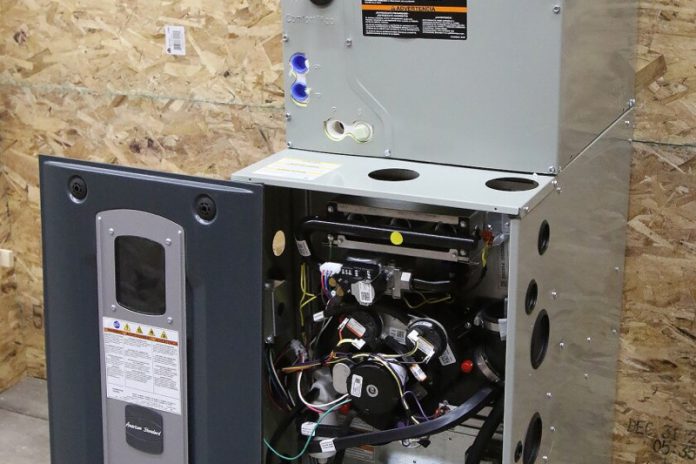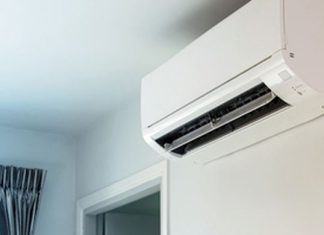Winter is almost here and your furnace will soon be hard at work keeping you warm on those cold days and nights. However, you may encounter problems over the course of the days ahead that will require repairs. Here are some of the most common problems encountered with home furnaces and potential resolution; for example, here’s a helpful guide on how to bleed a furnace by an experienced HVAC provider.
1. Furnace Clicks but Doesn’t Come On
If your furnace doesn’t have a sufficient power supply, it may not be getting enough voltage to operate properly. The problem might be due to a faulty thermostat. You can attempt to reset the furnace by flipping the circuit breaker to the “off” position for at least twenty minutes and then flipping it back into the on position.
The problem might also be in the electronic ignition. For heat to come on, the thermostat will signal for the gas furnace to open the gas valve. A sensor then realizes that there is gas available and will ignite.
This can create the repeated sound of a click. If you have a faulty or dirty sensor, it may not be telling the gas valve to open, leaving the ignitor to continue clicking in an attempt to start without success.
2. Odd Noises Coming from the Furnace
The exact source of unusual noises coming from your furnace can be difficult to identify. If you are unable to stop them by performing a simple reset, this may be an indication of a more serious problem.
Whining, squealing, hissing, or clanging noises may not prevent your furnace from working but they are solid indicators that there is an issue that needs to be resolved. Failure to do so can lead to further damage and potential failure.
There is very little you can do to correct the problem yourself. Your best option is to contact a furnace repairman to assess the problem and make repairs for you.
3. Furnace Not Heating Effectively
If your furnace is running but not heating your home properly, it can be one of several problems. One such issue is that your furnace is too large for the space you are trying to heat. Furnaces function in cycles.
Each cycle produces a set output delivered over a defined period of time. The result is that the thermostat will turn off the furnace before it has had a chance to finish a full cycle of heating. This means that your home will not be heated efficiently.
4. Furnace Consumes Too Much Power
If you allow your air filter to remain in place without changing it, it will become dirty and clogged, making it harder for your furnace to move air through it. Improper filter maintenance that allows filth to accumulate will result in high energy bills and damage your furnace, shortening its lifespan.
You should change your air filter once every three months but during periods of heavy use, it is better to increase changes to a monthly rotation. Otherwise, your unit risks getting clogged with dirt, dust, and debris that prevent proper air circulation and reduce heating efficiency.
This in turn raises your costs to run the unit and puts you at risk of more serious repairs due to excess wear and tear. You might also see a rise in energy costs if your furnace is too small to properly heat the space it is intended to keep warm. It will stay on longer to accomplish the set temperature, creating larger utility costs.
This issue is much like the problem with having a unit that is too large for the space. The reaction of the equipment is different, but the outcome is the same, running longer and costing more to operate. The extra exertion a unit will put out in an attempt to do its job will also result in a reduced lifespan due to excess wear and tear.
5. Blank Thermostat
It can be very concerning to check your thermostat only to find it completely blank, but this isn’t always the serious issue you might initially fear it to be. Many homeowners don’t realize that their thermostat contains batteries that need to be replaced from time to time. This is the first thing you should check if you find yourself staring at a thermostat with a blank screen.
If a battery change fails to correct the problem, you then should consider that you’ve had a thermostat failure. Most models will last around 10 years.
Another possible answer is that condensing furnaces have a thermostat that is connected to the furnace pump. A built-in safety mechanism tells the system to switch off if the unit overheats or experiences some other serious mechanical failure. It is important to have a qualified heating professional inspect your furnace and determine the cause so you can get your system back up and running.
Your furnace is an important piece of equipment that you will want to last for years to come. Most homeowners don’t give this powerful appliance a second thought unless it fails to operate properly but they should. If you take the time to have routine furnace maintenance done, you can catch small problems before they become more serious issues. The last thing you want is to find yourself without heat in the middle of a cold night when it may be hard to get emergency repairs.
6. Prevent Furnace Issues by Getting Regular Maintenance
Yearly inspections completed by a reputable HVAC company will help prevent issues before they become failures. Most companies will even take the guesswork out of when you should have your next preventative maintenance done by calling you to schedule an appointment when the time grows near if you sign up for a maintenance plan that covers the annual inspection and tune-up for your heating and cooling system.
While a yearly inspection won’t prevent failures due to catastrophic events, it will usually give you peace of mind in knowing that your system is operational and will get you through the cold months ahead without failure or costs beyond the normal energy expenditures you expect for heating your home during cold spells.
If you haven’t already had your furnace inspected for the winter ahead, you should take the time to schedule an appointment today.















